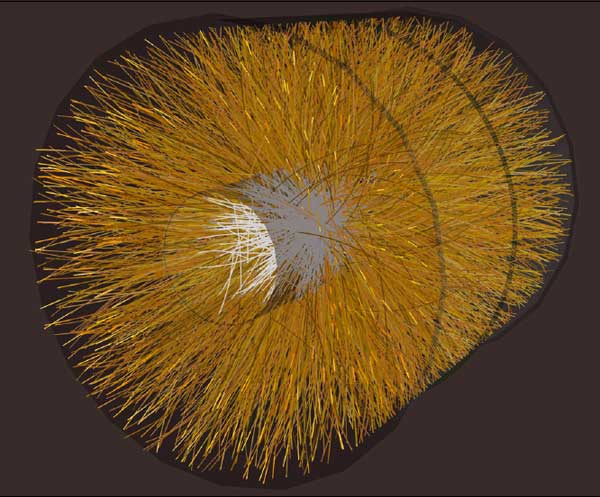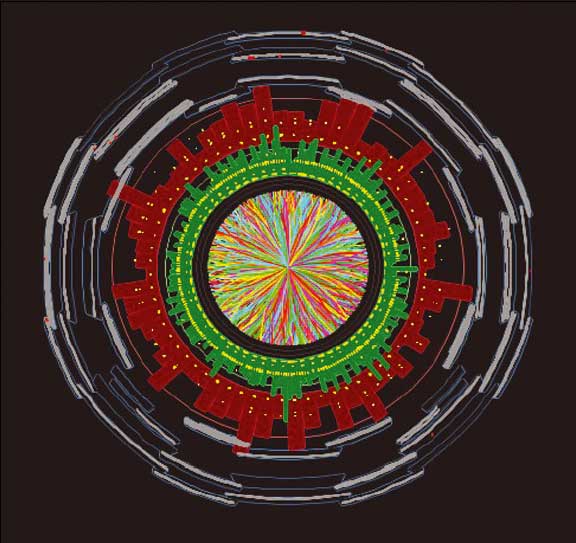
Four days is all that it took for the LHC operations team at CERN to complete the transition from protons to lead ions in the LHC. After extracting the final proton beam of 2010 on 4 November, commissioning the lead-ion beam was underway by early afternoon. First collisions were recorded at 0.30 a.m. on 7 November, and stable running conditions marked the start of physics with heavy ions at 11.20 a.m. on 8 November.
Since the first proton collisions occurred at 7 TeV in the centre-of-mass at the end of March, the machine and experiment teams have achieved all of their objectives for the first year of proton physics in the LHC at this record energy. A major target for 2010 was to reach a peak luminosity of 1032 cm–2s–1. This was achieved on 13 October, with two weeks to spare. Before proton running came to an end the machine had reached twice this figure, allowing experiments to double the amount of data collected in the space of only a few days. For the rest of the year the LHC is moving to a different phase of operation, with lead ions being brought into collision in the machine for the first time.

Operating the LHC with lead ions is completely different from operating it with protons. From the source to collisions, operational parameters have to be re-established for the new type of beam. For lead ions, as for protons before them, the procedure started with threading a single beam round the ring in one direction and steadily increasing the number of orbits before repeating the process for the other beam.
Once circulating beams were established, they could be accelerated to the full energy of 287 TeV per beam – an energy much higher than for proton beams, because the lead ions contain 82 protons. Another period of careful adjustment was needed before lining the beams up for collision, and then finally declaring that nominal data-taking conditions had been established. The three experiments recording data with lead ions, ALICE, ATLAS and CMS, can now look forward to continuous lead-ion running until CERN’s winter technical stop begins on 6 December.

Lead-ion running opens up an entirely new avenue of exploration for the LHC programme, probing matter as it would have been in the first instants of the universe’s existence. One of the main objectives is to produce tiny quantities of such matter, which is known as quark-gluon plasma, and to study its evolution into the kind of matter that makes up the universe today. This exploration will shed further light on the properties of the strong interaction, which binds the particles called quarks, into bigger objects, such as protons and neutrons.
Following the winter technical stop, operation of the collider will start again with protons in February and physics runs will continue through 2011.







